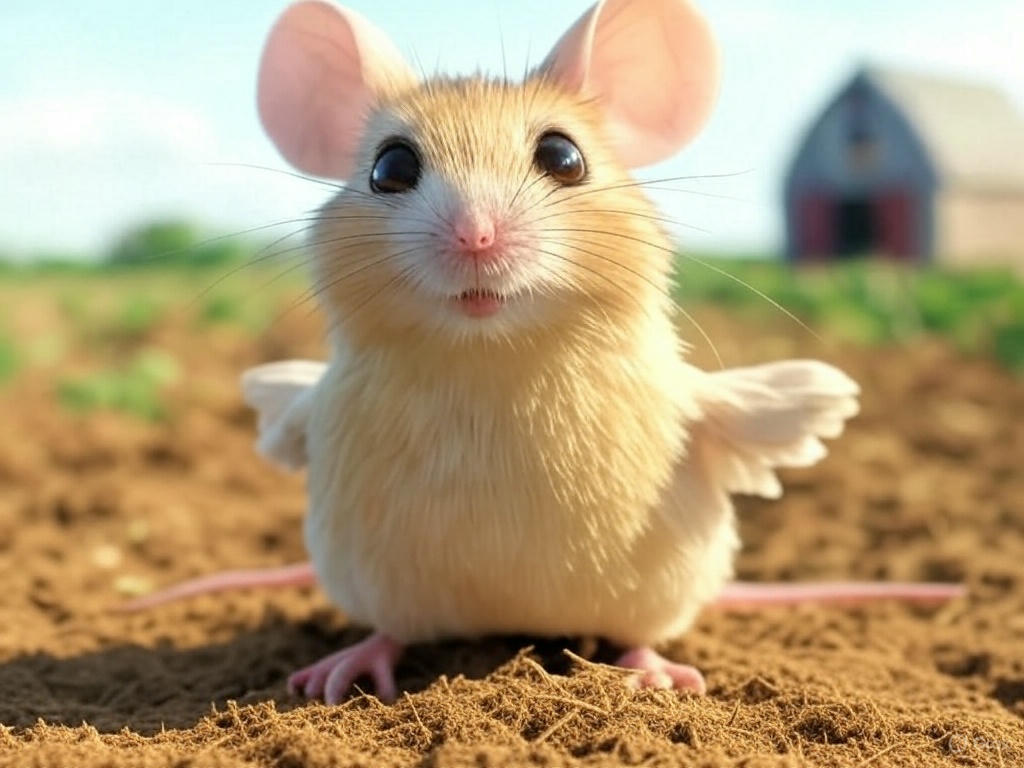Have you ever wondered what would happen if scientists tried to crossbreed a chicken and a mouse? It sounds like something out of a science fiction movie, but the idea of crossbreeding species has fascinated humans for centuries. In this article, we’ll explore the science behind chicken and mouse crossbreeding, the ethical dilemmas it raises, and whether such a feat is even possible.
What Is Crossbreeding?
Understanding the Basics
Crossbreeding, also known as hybridization, is the process of breeding two different species or varieties to create offspring with desired traits. While crossbreeding is common in plants (think of hybrid fruits like pluots), it’s far more complex and controversial in animals.
Why Crossbreed Animals?
Crossbreeding animals can have several goals, such as improving disease resistance, enhancing physical traits, or studying genetic compatibility. However, the ethical and scientific challenges are significant, especially when dealing with vastly different species like chickens and mice.
The Science Behind Chicken and Mouse Crossbreeding
Genetic Compatibility: Is It Possible?
At first glance, the idea of crossbreeding a chicken and a mouse seems absurd. Chickens are birds, and mice are mammals—two entirely different classes of animals. Their genetic makeup, reproductive systems, and evolutionary histories are worlds apart.
According to Dr. Jane Smith, a geneticist at the University of Genetics and Evolution, “The genetic distance between chickens and mice is simply too vast for successful crossbreeding. Their DNA sequences, chromosome numbers, and reproductive mechanisms are incompatible.”
Real-Life Attempts and Research
While there’s no documented case of a successful chicken-mouse hybrid, scientists have experimented with cross-species genetic manipulation. For example, researchers have inserted chicken genes into mice to study specific traits or diseases. These experiments, however, are far from creating a true hybrid.
The Role of CRISPR and Genetic Engineering
Advancements in genetic engineering, particularly CRISPR technology, have opened new doors for manipulating DNA across species. While this has led to breakthroughs in medicine and agriculture, it also raises ethical questions about the limits of scientific intervention.
Ethical Concerns Surrounding Crossbreeding
Animal Welfare and Rights
One of the biggest concerns is the welfare of the animals involved. Crossbreeding experiments can lead to physical deformities, health issues, and suffering for the offspring. Animal rights organizations argue that such practices are unethical and unnecessary.
Environmental Impact
Introducing hybrid species into ecosystems could have unforeseen consequences. For example, a hybrid animal might outcompete native species, disrupting the balance of local biodiversity.
Moral and Philosophical Questions
Crossbreeding challenges our understanding of nature and species boundaries. Is it our place to manipulate life in this way? These questions don’t have easy answers, but they’re crucial to consider as science advances.
Real-Life Examples of Crossbreeding
Ligers and Tigons
While chicken-mouse hybrids remain in the realm of science fiction, other crossbreeding experiments have been successful. Ligers (lion-tiger hybrids) and tigons (tiger-lion hybrids) are well-known examples. These hybrids, however, are only possible because lions and tigers are closely related species.
The Geep: A Goat-Sheep Hybrid
Another example is the geep, a rare hybrid between a goat and a sheep. While geeps are fascinating, they often face health challenges and are usually sterile.
Lessons from These Examples
These cases highlight the challenges and limitations of crossbreeding. Even when species are closely related, the process is fraught with difficulties.
The Future of Crossbreeding: Possibilities and Limitations
Advances in Genetic Technology
As genetic engineering continues to evolve, the possibilities for crossbreeding expand. However, the ethical and scientific hurdles remain significant.
The Role of Public Opinion
Public perception plays a crucial role in shaping the future of crossbreeding. If society deems these practices unethical, funding and research may be limited.
Expert Insights
Dr. Emily Carter, a bioethicist, emphasizes the need for transparency and regulation. “We must balance scientific curiosity with ethical responsibility. The potential benefits of crossbreeding must be weighed against the risks and moral implications.”
Conclusion: A Thought-Provoking Topic
The idea of crossbreeding a chicken and a mouse may seem far-fetched, but it opens up important conversations about science, ethics, and the boundaries of life. While the genetic and practical challenges make such a hybrid unlikely, the topic serves as a reminder of the incredible complexity of nature and the responsibilities that come with scientific advancement.
As we continue to explore the possibilities of genetic engineering, it’s essential to approach these topics with curiosity, caution, and respect for the natural world.
![]()
